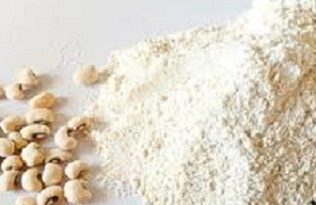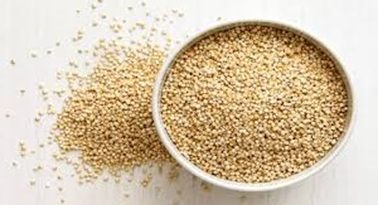Bokoboko Leaves Benefits: Ghanaian Borkorbokor
Bokoboko Leaves Benefits ~ Ghanaian Borkorbokor (Waterleaf)

The health benefits of waterleaf, also known as Bokoboko in Ghana.
Bokoboko leaf known in English as Waterleaf (Talinum triangulare), Gbure in Yoruba, Ebe-dondon in Edo, and nicknamed Philippine spinach, sweetheart, flame flower, Florida spinach, etc. contains about 80% of water.
The entire plant, including the root, stem, and leaves, can be used to make local medicines that are very healthy for the body.
They contain ingredients and antioxidants that could support better and more robust health. The leaves are often consumed raw and occasionally added to salads.
The delicious leafy vegetable known as waterleaf, or Talinum triangular (Botanical name), is a member of the Portulaceae family. Before spreading to other regions of the world including Asia and South America, it originated in West Africa.
Table of Contents
Bokoboko Leaves Benefits ~ an Overview
Bokoboko leaf is an herbaceous perennial plant that normally has its stem evident above ground. Typically, the seed grows into a little, aqua-colored plant before becoming a larger, more noticeable plant.
As the name implies, this green leafy vegetable is referred to as waterleaf due to its high moisture content of approximately 90.8 g per 100 gm of the leaf.
Due to the leaf’s high pectin content, which provides dietary fiber, it becomes sticky when chopped.
Normally, like grasses in the fields, we match, piss on them and uproot them from our gardens in preference for other plants which we consider more important. But the more we weed them out, the more they grow again, as if in defiance.
Bokoboko Leaf Vegetable
Like most succulent plants, bokoboko leaf or waterleaf leaves and stems, especially young ones, are easy to crush.
Its roots will decay in wet soil and is also quite sensitive to cold temperatures.
Because of its fragility, it frequently appears to be an annual plant growing wildly.
It grows best in humid environments, on fertile compost or acidic, well-drained soil with partial shade.
However, it can also flourish in areas that are completely exposed to the environment, in direct sunlight, on sandy soil, and at elevations.
Waterleaf can withstand drought, hot weather, and searing sun.
It grows quickly from seeds and cuttings, and it can be harvested in about two months. It is regarded as an agricultural weed in some regions because of how readily it spreads from seed.
About Nutrition Facts and Health Benefits of WaterLeaf ~ Bokoboko Leaves Benefits
Nutrition
Waterleaf is a rich source of the essential nutrients Calcium, Phosphorus, Iron, and Vitamin C.
It is also a good source of:
- Vitamin A
- Thiamine
- Riboflavin
- Niacin
Nutrients per Serving
Every 100 grams of waterleaf contains approximately:
- Calories: 25
- Protein: 2.4 grams
- Fat: 0.4 grams
- Carbohydrates: 4.4 grams
- Fiber: 1.0 grams
Bokoboko Leaves Benefits
Waterleaf is incredibly nourishing. It also contains a lot of oxalates, which is also high in oxalate.
Oxalate is a natural chemical found in Foods like spinach, rhubarb, beets, sweet potatoes, and waterleaf contain the natural chemical oxalate.
Oxalate may play a role in kidney stones in people with kidney diseases. Blanching or heating can eliminate up to 50% of the soluble (dissolves in water) oxalate.
Waterleaf’s lectins can also be eliminated while cooking. Although lectins are mostly safe, they can prevent the body from properly absorbing micronutrients including calcium, iron, and zinc.
Some of the health benefits of waterleaf include:
- Bone Health
- Eye Health
- Iron Deficiency and Anemia
- Cognitive Health
- Improves the Blood Cells
- Eliminates Infections & Diseases
- Repairs Body Tissues
- Helps burn stomach fat
- Good for pregnant mothers.
- Helps in Digestion
- Good for Weightloss
- Improves Blood Clotting
Waterleaf Juice ~ Bokoboko Leaves Benefits
Given that waterleaf juice is primarily used in cooking and is a significant ingredient in many Nigerian regional dishes, it’s possible that most people aren’t very familiar with it.
Waterleaf juice has several established health benefits, including raising blood pressure and successfully treating a variety of diseases.
How to Make Waterleaf Juice
To get the juice;
- Firstly, wash the waterleaf very well to remove dirt and sand
- Please, don’t pluck the leaves from the stem as both are medicinal and contain several degrees of nutrients.
- After that, cut it into tiny pieces to enable easy squeezing or pounding.
- Lastly, squeeze effectively and strain the juice.
On the other hand, some grinding machines like a blender can do a better job, but the above method should be looked into in case there is no grinding machine.
7 Benefits of Drinking Waterleaf Juice Regularly | Water Leaf Juice | Bokoboko Leaves Benefits
Waterleaf juice is the ideal drink for you if you want to transition to a more natural health drink:
Waterleaf juice is not only incredibly healthy, delicious, and refreshing, but it also works wonders to strengthen the immune system.
To prepare a nutritious elixir, the plant Talinum Triangulare’s luscious leaves are harvested and are simple to crush.
When used properly, the underappreciated plant offers a wide range of health advantages.
Here are seven advantages of routinely consuming waterleaf juice, along with instructions for making it at home (above)
Benefits of Drinking Waterleaf Juice
- Promotes Good Skin
- Improves Brain Activity
- Manages Blood Pressure
- Is beneficial in Pregnancy
- Prevents Blood Clots
- Improves Eye Health
- Helps with Digestion and Weight Loss
- Good for Overall Health
Is Waterleaf Good in Pregnancy?
Waterleaf is frequently referred to as the “blood-pumping machinery” since it is essential to the body’s proper blood production.
Pregnant women benefit from it because it raises their blood pressure and gives them other essential nutrients that their bodies require.
Uses of Boko Boko (waterleaf) ~ Bokoboko Leaves Benefits
- Culinary Uses of Waterleaf ~ Uses of Waterleaf in Food
In general, water leaves are advantageous to human health. They have a wide range of culinary applications and can be used to make yam, salad, waterleaf soup, stew or sauce, tea, and more.
Waterleaf is used in the preparation of specialty soups such as Mgbolodi Soup, Edikang Ikong and Afang (common in Cross River and Akwa Ibom), and others in the southern region of Nigeria.
- Medicinal Uses
Water leaves have been used for a variety of medical purposes in many different ways.
As they have been successful in treating measles, its juice, stem, leaves, and roots are all regarded in this circumstance as effective.
Additionally, it can treat malaria, anemia, and sleeplessness. It is used to cure diarrhea, and lessen weakness, and other conditions.
Let’s take a look at how you can prepare herbal medicine.
Blend Bokoboko (Waterleaves), Add Orange Juice Drink It 30min Before Eating To Enjoy These Benefits.
Method
- Firstly, take 2 handfuls of the Waterleaves.
- Then, blend them using a blender to a liquid form. You can also use the local earthware bowl but it is very sticky so a blender is more appropriate.
- Lastly, squeeze two orange fruit (liquid) into the herbal medicine. You can decide to add the orange juice or not.
Side Effects
Waterleaf has several advantages to provide when we drink it properly, therefore it shouldn’t be undervalued.
It is one of the vegetables we should include in our daily meals because of its abundance in vitamins and minerals.
FAQs about the Bokoboko Leaves Benefits
What advantages does Bokoboko offer? Reasons to always consume Boko Boko
- Heart disease and stroke prevention
Regular consumption of Boko Boko has the power to shield you from heart-related illnesses like stroke.
If you consume this vegetable frequently, it will keep you fit and healthy.
How do you use water leaves?
- Culinary Uses of Waterleaf
In general, water leaves are advantageous to human health.
They have a wide range of culinary applications and can be used to make yam, salad, waterleaf soup, stew or sauce, and more.
Can waterleaf be dried?
After being picked, waterleaf can be eaten right away, dried, or refrigerated in a plastic bag to keep it fresh.
It is frequently used in soups, stews, stir-fries, and pizza and can be prepared similarly to spinach.
How are water leaves (Nigerian spinach) preserved?
Wash first; use a sharp knife to chop or shred; pack in Ziploc bags; store in the freezer, and keep frozen until needed
Can waterleaf neutralize poisons?
A wide variety of biological and pharmacological actions, including anti-inflammatory, anti-fungal, and anti-bacterial capabilities, are demonstrated by waterleaf.
For the treatment of hypertension, a decoction of water leaf, alligator pepper, and avocado is recommended.
Is waterleaf effective for losing weight?
The low calorie and high fiber content of waterleaf can aid in weight loss.
Waterleaf controls blood sugar levels, which aids in the treatment of diabetes.
Consuming waterleaf helps lower blood cholesterol levels since it contains soluble fiber.
What is Nigerian water leaf?
Waterleaf is a crucial leafy vegetable in Nigeria and is referred to as Efo Gbure in Yoruba.
They are frequently referred to as Surinam Purslane and were originally thought to belong to the Purslane family
Can you eat water leaf raw?
Waterleaf should only be eaten raw in moderation because it also contains hydrocyanic acid, and it should not be fed to cattle.
Since this vegetable includes nitrates and nitrites that are not destroyed by heating, it should not be used in infant diets.
What can you use waterleaf to cook?
Waterleaf recipes
- Bean and spaghetti with waterleaf sauce
- Waterleaf and ugu soup
- Waterleaf Golden Yam
- Ofe Ngbolodi na Onugbun(waterleaf and Bitterleaf Soup
- Waterleaf stew/sauce
- Etinkeni Mmong Ikong (waterleaf and Uziza)soup
- Ugu and waterleaf soup
- Eba with ugu and waterleaf soup


